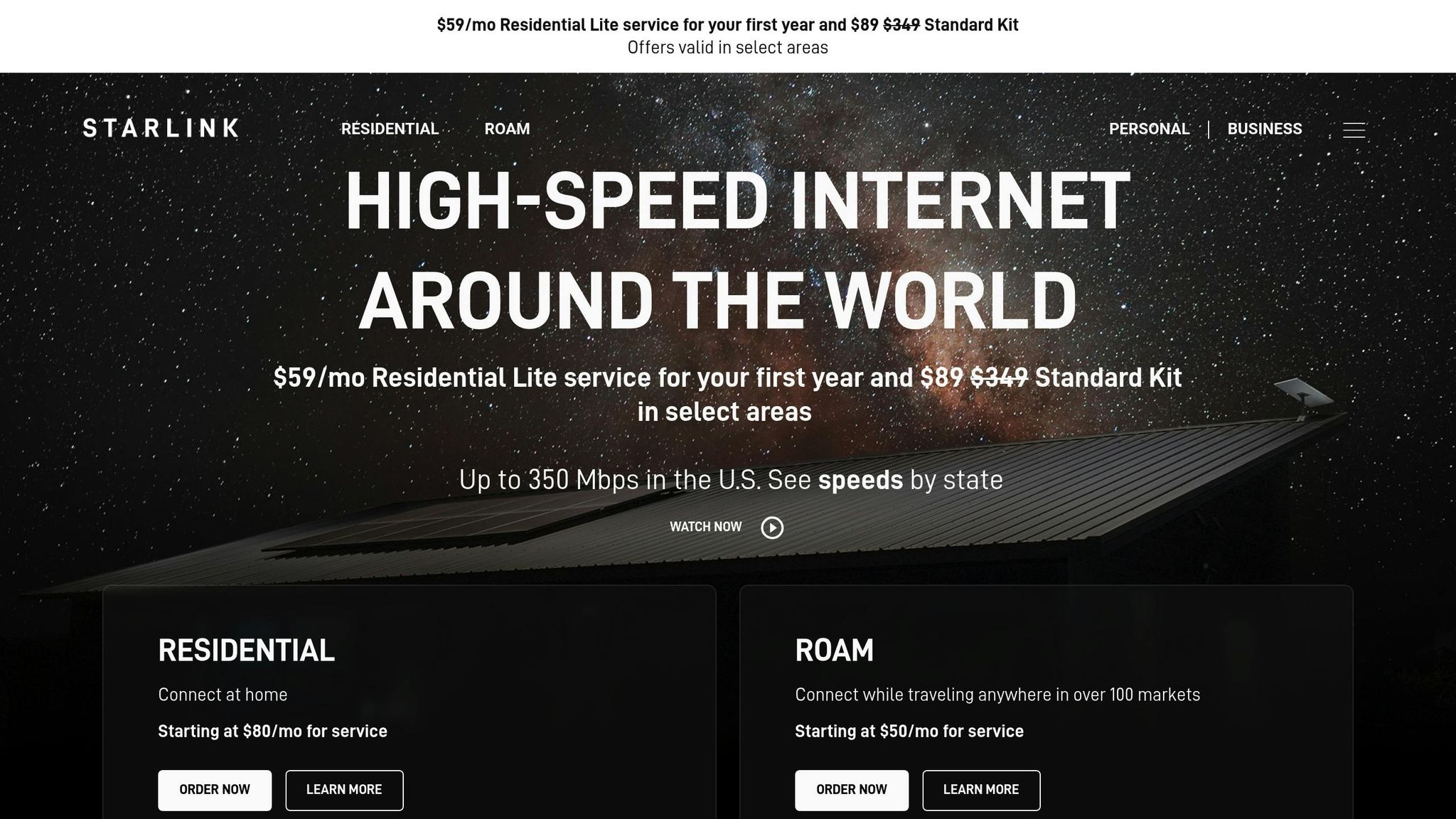Starlink, the satellite internet arm of SpaceX, has become a hot topic for investors anticipating its IPO. Whether it launches smoothly, faces market turbulence, or opts for alternative financing, each scenario offers lessons for retail investors and tech industries like SaaS and AI.
- Smooth Launch: Strong financials and market timing could drive high demand, benefiting retail investors long-term but favoring institutions upfront.
- Bumpy Entry: Market volatility may create buying opportunities but also risks for investors. This could impact SaaS and AI funding tied to connectivity.
- Postponed/Alternative Route: Delays or private funding could limit retail access but allow Starlink to strengthen its business, indirectly affecting global tech expansion.
For investors, flexibility and diversification are key. For SaaS and AI companies, these scenarios highlight the potential ripple effects on funding and connectivity-dependent growth.
Elon Musk to consider Starlink IPO once cash flow stabilizes

1. Smooth Market Launch
A smooth Starlink IPO would likely hinge on strong financials and a positive market environment. It would enter the public sphere backed by steady revenue, favorable investor sentiment, and a clear regulatory framework.
Triggers and Indicators
Several key factors could signal a successful market debut:
- Consistent quarterly revenue growth that demonstrates financial stability
- Positive market timing, particularly during periods of strong enthusiasm for tech stocks
- Clear regulatory guidelines for satellite internet operations, reducing uncertainty
- A growing portfolio of enterprise contracts, ensuring a reliable revenue stream
These elements create a solid foundation for investors to evaluate the IPO's potential.
Retail Investor Implications
For retail investors, a smooth IPO launch offers both opportunities and challenges. Early allocations often favor institutional investors, leaving retail participants to focus on long-term strategies. To manage risks associated with high-profile IPOs, diversification across different sectors can be an effective approach.
Impact on the SaaS and AI Markets
A successful Starlink IPO could have ripple effects across the tech industry. Improved global connectivity might drive SaaS adoption in underserved regions, open new doors for edge computing, and fuel AI advancements. These shifts could strengthen confidence in subscription-based revenue models and help businesses expand their reach in increasingly competitive global markets.
2. Bumpy Market Entry
A rocky market debut highlights the challenges and risks tied to IPOs in emerging tech sectors. If Starlink faces a turbulent launch, even seasoned investors may find themselves navigating choppy waters.
Triggers and Indicators
There are several signs that could signal a challenging IPO for Starlink. One major hurdle is market volatility, especially during downturns for tech stocks. When markets are unstable, regulatory uncertainties surrounding satellite operations can further erode investor confidence. Lack of clear operational guidelines often makes institutional investors hesitant.
Competition also adds to the pressure. Traditional internet service providers resisting satellite expansion could create headwinds, particularly if Starlink struggles to sustain subscriber growth or faces persistently high maintenance costs.
Pricing the IPO too aggressively in an unpredictable market could backfire. If the stock trades below its offering price on the first day, it can spark negative momentum that lingers, creating a tough environment for months to come. This kind of volatility presents both challenges and opportunities for retail investors.
Retail Investor Implications
For retail investors, price fluctuations can open up buying opportunities, but they also come with risks. Jumping in at price peaks could trap investors in losses. Additionally, lock-up expirations - typically occurring 90 to 180 days after the IPO - often flood the market with insider shares, putting downward pressure on prices.
Media coverage during turbulent IPOs can amplify sentiment-driven price swings, which may not align with the company’s actual performance. Retail investors who focus on long-term fundamentals rather than daily market noise often fare better in these situations.
Impact on SaaS/AI Marketplace
A shaky Starlink IPO could ripple beyond its core market, influencing the SaaS and AI sectors. Investor enthusiasm for infrastructure-related ventures might cool temporarily, potentially affecting funding for startups focused on global connectivity.
This volatility could create opportunities for established SaaS companies to acquire smaller competitors at lower valuations. Firms with strong financials may use this period to expand while others face challenges accessing capital.
AI companies that rely on edge computing and global data networks might also feel the impact. Investors could become more cautious about satellite-dependent business models, which might slow funding for AI tools reliant on global connectivity. However, the underlying demand for such technologies is likely to remain steady.
In the satellite internet space, uncertainty could drive consolidation. Smaller players may opt for partnerships or acquisitions rather than trying to compete with larger, well-funded companies.
sbb-itb-9cd970b
3. Postponed or Different Route
Sometimes, highly anticipated IPOs take a detour. Companies like Starlink might delay their public debut or explore alternative financing strategies, reshaping opportunities for retail investors in the process.
Triggers and Indicators
When a company like Starlink chooses to delay its IPO or take a nontraditional approach, it's often due to specific market and operational factors:
- Market Conditions: If the tech sector is underperforming or facing prolonged weakness, Starlink might hold off. The satellite internet industry is capital-intensive, and market downturns or regulatory hurdles can make timing crucial. Licensing approvals from international bodies, for example, could cause delays if clarity on regulations isn’t achieved.
- Financial Performance: If Starlink’s subscriber growth slows or operational costs exceed expectations, leadership could decide to wait until the business shows stronger results. Instead of going public, they might explore private equity partnerships, strategic acquisitions, or even remain part of SpaceX for longer.
Retail Investor Implications
A delay or alternative route to raising capital comes with unique challenges for retail investors:
- Limited Access: Private equity rounds often require minimum investments in the range of $1 million, which is far out of reach for most individual investors. This limits retail participation in Starlink’s growth during its private phase.
- Opportunity Costs: Investors holding cash in anticipation of a Starlink IPO risk missing out on other investment opportunities. However, a delayed IPO could allow Starlink to refine its business model, potentially leading to stronger long-term returns when it eventually goes public.
For those eager to invest, secondary markets might offer a way in. Some platforms facilitate trading of private company shares, but these options often come with higher fees and reduced liquidity, making them less attractive.
Impact on SaaS/AI Marketplace
If Starlink takes an alternative route, the ripple effects could extend into the SaaS and AI sectors:
- Connectivity Uncertainty: Startups that rely on satellite-based global internet infrastructure might face delays in their growth plans. This could slow down funding rounds for businesses dependent on Starlink’s expansion.
- Shift in Investment Patterns: Investors might pivot toward software-focused companies with lower capital needs. While pure SaaS firms could benefit, hardware-reliant AI startups may struggle to secure funding. This could lead to consolidation, with larger tech firms acquiring smaller satellite-dependent AI companies to gain control over connectivity infrastructure.
- Global Expansion Delays: SaaS companies targeting underserved or remote markets may encounter setbacks. Many AI tools and cloud services depend on improved global internet coverage, and any delay in Starlink’s rollout could slow their ability to reach these regions.
In short, a postponed or alternative IPO for Starlink wouldn’t just impact investors - it could reshape the broader tech ecosystem in unexpected ways.
Benefits and Drawbacks
Starlink's IPO scenarios, based on three possible models, bring a mix of advantages and challenges for retail investors and the SaaS/AI marketplace.
A smooth market launch offers retail investors immediate access to shares with transparent pricing but comes with steep entry costs and fierce competition from institutional players. On the other hand, a bumpy market entry creates chances to buy shares during price dips, potentially lowering the average cost. However, it also introduces market volatility and timing difficulties. If the IPO is postponed or takes an alternative route, investors gain more time to plan and refine strategies, though access to early growth opportunities becomes limited.
For the SaaS/AI marketplace, a successful IPO could mean increased funding, stronger partnerships, and expanded global connectivity. Yet, delays or uncertainty could hinder growth and dampen investor confidence. Here's a breakdown of the benefits and drawbacks across the scenarios:
| Scenario | Retail Investor Benefits | Retail Investor Drawbacks | SaaS/AI Marketplace Benefits | SaaS/AI Marketplace Drawbacks |
|---|---|---|---|---|
| Smooth Market Launch | Quick access to shares; transparent pricing | High entry costs; stiff competition | Boosted global expansion; investor trust | Increased competition; valuation stress |
| Bumpy Market Entry | Chance to buy during dips; lower average cost | Volatility; timing challenges | Realistic valuations; better partnerships | Funding uncertainty; expansion delays |
| Postponed or Different Route | Time to prepare and adjust strategies | Limited early access; delayed growth capture | Focus on product development; infrastructure readiness | Delayed connectivity; planning uncertainty |
The IPO's timing and structure will heavily depend on market dynamics, regulatory hurdles, and competitive forces. Both retail investors and SaaS/AI companies should remain adaptable, preparing for multiple possible outcomes.
Conclusion
The three potential Starlink IPO models highlight a key takeaway: having multiple strategies in place often works better than sticking to a single, rigid plan - no matter the market conditions.
For retail investors, this means embracing diversified strategies to balance risks and capitalize on new opportunities as they arise. Meanwhile, SaaS and AI companies can use these models as a guide to refine how they evaluate IPOs and adjust their plans to match the ever-changing market landscape. By looking at Starlink's scenarios, businesses and investors alike can draw practical lessons for thriving in the fast-paced tech sector.
These models act as a roadmap for making smarter decisions and emphasize the importance of staying flexible. Use them to sharpen your approach and navigate market changes with confidence.
FAQs
How might a Starlink IPO affect retail investors, and what steps can they take to prepare?
A potential Starlink IPO could open doors for retail investors, but it’s not without its challenges. With valuation estimates ranging from $30 billion to over $300 billion, the hype surrounding such an event could lead to risks like overvaluation and market swings. Investors should tread carefully.
To get ready, take the time to understand Starlink's business model and its growth prospects. Evaluate your own risk tolerance and think about diversifying your investments. Since Starlink is still privately held, you can’t buy shares directly yet. However, keeping an eye out for public listing updates or exploring ETFs that might include Starlink in the future could be smart moves. The key here is patience and thorough preparation to make the most of this potential opportunity.
What impact could a delayed or alternative IPO for Starlink have on funding and growth opportunities for SaaS and AI companies?
If Starlink opts for a delay or takes a different route to its IPO, it might temporarily dampen market buzz and reduce liquidity. This could have a short-term effect on funding availability for SaaS and AI companies, which often rely on robust capital markets to drive their innovation and expansion.
On the flip side, this shift could push investors to prioritize more thoughtful, long-term investments. By recalibrating risk and valuation expectations, it might bring a steadier rhythm to funding trends, paving the way for more balanced and enduring growth across the tech sector.
How can retail investors manage risks when investing in a potentially volatile Starlink IPO?
Retail investors looking to navigate the potential ups and downs of an IPO like Starlink should start by diving into the company's prospectus. This document offers valuable insights into the business's financial health, market position, and overall strengths and weaknesses. Taking the time to understand these details can provide a clearer picture of its growth prospects.
Another way to manage IPO-related risks is by spreading your investments across different industries and asset types. Diversifying your portfolio can help cushion against potential losses tied to any single investment. It's also wise to stay level-headed and not get swept up in the market buzz. Instead of chasing short-term trends, focus on the long-term value of your investments and avoid making snap decisions you might regret later. Lastly, pay attention to lock-in periods, as they can affect the liquidity of your shares and play a role in your overall investment strategy.
Related Blog Posts
- The Predictive Power of AI: How Founders are Using AI Agents to Forecast the ROI of a Sales-for-Equity Hire
- The "Rule of 40" Redefined: How Gen AI is Helping SaaS Startups Hit the Metrics That Attract PE Offers
- Musk’s “Inside Game”: How xAI Buying X Rewrote a ‘Bad LBO’ Narrative
- The Private Equity Playbook: How Musk's Starlink Avoids the Pitfalls of Going Public



